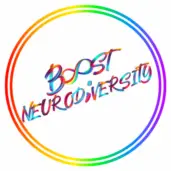In the monumental tapestry of human experiences, there’s a vast array of cognitive styles, aptitudes, and perceptions painted across its surface, close-knit yet unique in their patterns. These are the threads of neurodiversity that shape and enrich our society. This discourse on neurodiversity seeks to explore the concept, unraveling the beauty and complexity of neurodivergent conditions, while shining a light on the myriad of contributions made by neurodivergent individuals. Furthermore, it aims to delve into the proactive strategies for fostering a supportive and inclusive society where neurodiverse individuals are celebrated and empowered.
nnWhat is Neurodiversity?
nnNeurodiversity
nn nnNeurodiversity refers to the concept that people naturally have different brain structures and patterns, which result in variations in how individuals think, learn, and process information.
nn nnIt suggests that neurological differences such as autism, ADHD, and dyslexia, among others, are simply natural human variations and not defects or disorders.
nn nnTherefore, it proposes the inclusion and adaptation of society to suit all neurological profiles, which would require a shift from a pathologizing model that deems these differences as abnormalities needing to be fixed or cured.
nnThe Neurodiversity Movement
nn nnThe neurodiversity movement is an advocacy approach that promotes societal acceptance and appreciation of cognitive and neurological differences.
nn nnIt emphasizes the unique perspectives and talents that neurodivergent individuals possess, and often significantly contribute to fields like technology, arts, and science.
nn nnAdvocates argue that instead of attempting to ‘normalize’ these neuro-divergencies, society should adjust educational, working, and societal environments to accommodate them.
nn nnThis may involve developing different teaching methods, creating work environments that are adaptable for neurodivergent employees, and improving support resources and accommodations for neurodivergent people.
nnExploring Neurodiversity Resources
nnnnIf your interest lies in gaining a broader understanding of neurodiversity and its role within our society, numerous comprehensive resources are at your disposal. These include a variety of books, enlightening articles, social media platforms dedicated to the topic, and rigorous academic research material.
nn
Neurodivergent Conditions
nnDelving into Neurodivergent Conditions
nnnnnCoined as a descriptor for neurological conditions that deviate from what’s considered ‘normal’, “neurodivergent” encapsulates a range of conditions like Autism, Attention Deficit Hyperactivity Disorder (ADHD), dyslexia, and more. Autism, sometimes referred to as Autism Spectrum Disorder (ASD), showcases a distinctive pattern of social interaction, communication, and behavior. This is often perceived in inflexible routines, specific interests or activities, and at times, outstanding abilities in fields such as math or music. ADHD, in contrast, is typically characterized by challenges in maintaining focus, hyperactivity, and impulsivity. However, people with ADHD frequently display heightened creativity and a knack for problem-solving.n
nnNeurodivergent Resource Guide
nnnnnA wide range of resources are available aimed at providing understanding and guidance for neurodivergent individuals and their caregivers. For example, the Autistic Self Advocacy Network promotes independence and self-reliance among individuals on the autism spectrum. Additionally, Children and Adults with Attention-Deficit/Hyperactivity Disorder (CHADD) offers an extensive support network for those living with ADHD and their family members. Similarly, the International Dyslexia Association provides resources specifically tailored for dyslexic individuals, which focus on maximizing their unique processing abilities. By utilizing such resources, neurodivergent individuals are able to comprehend their distinctive thought patterns more effectively, embrace their neurological differences, and achieve personal and professional success.n
nn
Supporting and Celebrating Neurodiversity
nnDelving into Support and Advocacy Resources
nnnnnNeurodivergent is a term that is applicable to individuals whose neurological functions stray considerably from societal norms. This includes those with disorders such as ADHD, ASD, and Dyslexia among others. A multitude of resources are available to bolster the neurodivergent community and rally for their rights. The National Center for Learning Disabilities (NCLD), for example, provides access to policy updates, advice aimed at caregivers and educators, and practical self-advocacy solutions. Furthermore, entities like the Autistic Self Advocacy Network (ASAN) offer a wealth of information in the form of policy briefs, toolkits, and reports that educate the autism community and promote widespread advocacy.n
nnBest Practices in School and Workplace Inclusivity
nnnnnIn the journey to embrace neurodivergence and foster inclusivity, efforts in schools and workplaces are significant. Schools can work towards providing individualized educational programs, constant support from special educators, as well as a learning environment that fosters interaction and creativity for neurodivergent individuals. Workplaces can practice inclusivity by offering comprehensive training for staff to understand neurodivergence, making physical workspaces accommodating, and creating policies that encourage diverse thinking. The aim is to create an atmosphere where neurodivergent individuals are not just understood but also embraced and celebrated, encouraging them to maximize their potential.n
nnAt the intersection of these resources and practices is the goal of empowering the neurodivergent community.
nnnnnIt involves building understanding, advocating for rights, and developing a welcoming atmosphere where neurodivergent individuals can thrive. It is about recognizing that neurodivergent individuals are not deficient but simply different, and that this difference can often bring valuable perspectives and innovations.n
nn
As we weave through the intricate nuances of neurodiversities, acknowledging them necessitates a fundamental shift in our societal attitudes and practices – a shift pivoting towards understanding, acceptance, and celebration of neurological differences. By delving into neurodivergent conditions and highlighting the importance of supportive and inclusive initiatives, we can begin to reshape environments, such as schools and workplaces, to become spaces where neurodivergent individuals are championed. With a concerted effort, we can enable these individuals to thrive and significantly contribute to our societal fabric, accentuating an enriching neurodiversity that ultimately shapes our collective human experience.
nnnWritio: The ultimate AI content writer for websites and blogs. Get high-quality, customized articles in any style, complete with relevant images. This article was written by Writio.
n
